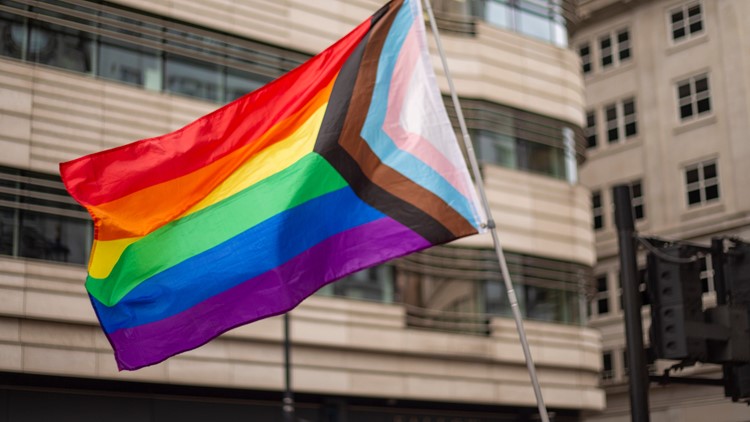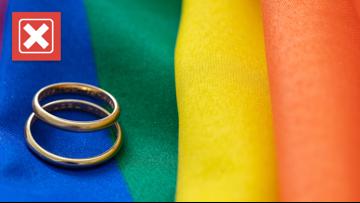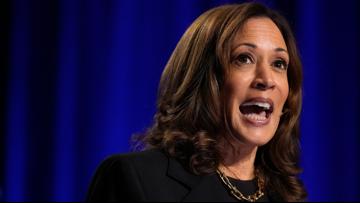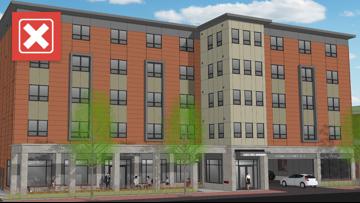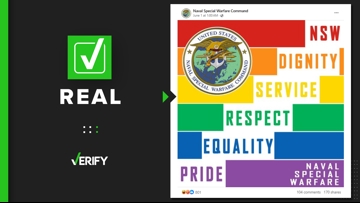While the rainbow flag has traditionally been associated with gay pride and the broader LGBTQ+ community, many other pride flags have been made over the years to represent different identities and sexualities. One such flag is the Progress Pride flag, which takes the traditional rainbow flag and adds a chevron with black, brown, blue, white and pink stripes.
A viral TikTok video that was also posted to Facebook claimed that the blue, white and pink stripes in the Progress Pride flag are representative of pedophiles or “minor-attracted persons.”
THE QUESTION
Do the blue, white and pink stripes in the Progress Pride flag represent “minor-attracted persons”?
THE SOURCES
THE ANSWER
No, the blue, white and pink stripes in the Progress Pride flag do not represent “minor-attracted persons.” The stripes represent transgender people.
WHAT WE FOUND
The blue, pink and white stripes found in the chevron portion of the Progress Pride flag represent the transgender community, incorporating the colors of the transgender pride flag, the Progress Pride flag’s website and the Victoria and Albert Museum say.
The trans pride flag was created in 1999 by Monica Helms, an activist and U.S. Navy veteran, according to the Smithsonian. She used blue because it’s the color traditionally used for males, pink because it’s the color traditionally used for females and white to represent people who are intersex, transitioning or have an undefined gender.
The Human Rights Campaign, the Gender and Sexuality Resource Center at the University of Northern Colorado and the U.S. Department of Veteran Affairs also confirm the meaning of the colors on their websites.
None of the sources above assign any sexual or romantic meaning to the colors whatsoever. All of them agree that the colors represent gender identities.
A transgender person is someone “whose gender identity, gender expression or behavior does not conform to that typically associated with the sex to which they were assigned at birth,” the American Psychological Association (APA) says.
Gender identity is a person’s internal sense of being male, female or something else. Gender expression is the way a person communicates gender identity to others through behavior, clothing, hairstyles, voice or body characteristic, the APA says.
In the traditional rainbow pride flag used as the Progress Pride flag’s base, red symbolizes life, orange stands for healing, yellow equals sunlight, green stands for nature, indigo represents serenity and violet symbolizes the spirit of LGBTQ+ people, the Human Rights Campaign says.
The black and brown stripes in the chevron of the Progress Pride flag represent LGBTQ+ people of color, although the black stripe also represents the many LGBTQ+ people who died in the HIV/AIDS crisis, the Human Rights Campaign says.
Neither the Human Rights Campaign or Outright International, both nonprofit organizations focused on LGBTQ+ rights, list any pride flags representing “minor-attracted persons” among the flags on their LGBTQ+ community flag pages.
Again, none of the colors are representative of “minor-attracted persons.”

